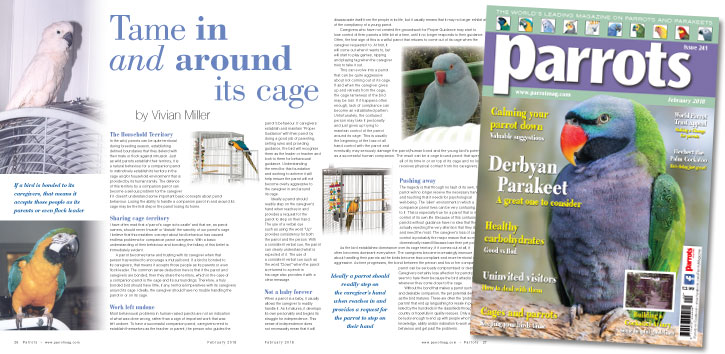
By Vivian Miller
In the wild, parrots can be quite territorial during breeding season, establishing defined boundaries that they defend with their mate or flock against intrusion. Just as wild parrots establish their territory, it is a natural behaviour for a companion parrot to instinctively establish its territory in the cage and/or household environment that is provided by its human family. The defence of this territory by a companion parrot can become a serious problem for the caregiver if it doesn't understand some important basic concepts about parrot behaviour. Losing the ability to handle a companion parrot in and around its cage may be the first step in the parrot losing its home.
I have often read that a 'parrot’s cage is its castle' and that we, as parrot owners, should never 'invade' or 'disturb' the sanctity of our parrot’s cage.
I believe that this mistaken concept about bird behaviour has caused endless problems for companion parrot caregivers. With a basic understanding of their behaviour and bonding, the fallacy of this belief is immediately evident.
A parrot becomes tame and trusting with its caregiver when that person has worked to encourage a mutual bond. If a bird is bonded to its caregivers, that means it accepts those people as its parents or even flock leader. The common sense deduction here is that if the parrot and caregivers are bonded, then they share the territory, which in the case of a companion parrot is the cage and its surroundings. Therefore, a truly bonded bird should have little, if any, territorial imperatives with its caregivers around its cage. Ideally, the caregiver should have no trouble handling the parrot in or on its cage.
Buy Now!
